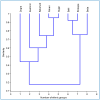Traditions for Future Cross-National Food Security-Food and Foraging Practices among Different Native Communities in the Western Himalayas
- PMID: 35336828
- PMCID: PMC8944997
- DOI: 10.3390/biology11030455
Traditions for Future Cross-National Food Security-Food and Foraging Practices among Different Native Communities in the Western Himalayas
Abstract
Traditional diets exist in all cultures and geographic regions, and they often represent healthy eating options. Traditional culinary preparations have, however, often undergone profound change, even in the isolated Himalayan region. Therefore, we adapted methods to identify traditional plant foraging activities to better understand their significance in food system sustainability, as well as to promote innovative local gastronomies. Information on wild food and foraging practices was gathered from varied ethnic groups such as Kashmiri, Gujjars, Pahari, Dogra, Bakarwal, Balti, Beda and Brokpa through interviews (n = 716) and group discussions (n = 67) in four bio-geographic regions of the Jammu and Kashmir Himalayas (J&KH). The data were subjected to ordination techniques (Principal Component Analysis) via R software Ver. 4.0.0. We documented 209 food species, of which 73% were plants and 27% animals, used by the inhabitants of four bio-geographic regions of J&KH. The highest number of food plant species was recorded in Indian Kashmir, followed by Jammu, Azad Kashmir and Ladakh (81, 65, 60 and 27 species, respectively), and the maximum number of animal species was reported in Indian Kashmir, followed by Azad Kashmir, Ladakh and Jammu (33, 21, 19 and 17 species, respectively). The Azad Kashmir and Indian Kashmir regions showed greater similarity, whereas the least overlap was observed between Kashmir and Ladakh. The PCA showed considerable variation between different regions, and specific groups of species were more related to one specific region than others. The reported uses of Abies pindrow, Acacia modesta, Bergenia ciliata, Bergenia stracheyi and Juglans regia among plants, and Jynx torquilla, Streptopelia orientalis and Tadorna ferruginea among animals, are novel for the gastronomy of this part of the Himalayan region. We also recorded for the first time from this region seven unique food preparations of wild animals. This study documented extensive traditional knowledge on the usage of wild species, and is the first scientific description of wild food species and their vernacular names in the Western Himalayas, Jammu and Kashmir. Our findings can contribute significantly to combating food insecurity by revitalizing and reconsidering the rich bio-cultural food heritage around which local traditional communities have developed their food systems.
Keywords: Himalayas; climate change; food security; livelihood; local cuisine.
Conflict of interest statement
All the authors declare no conflict of interest.
Figures









References
-
- Convention on Biological Diversity Report of the Conference of the Parties to the Convention on Biological Diversity on its Thirteenth Meeting; Proceedings of the Thirteenth Meeting of the Conference of the Parties to the Convention on Biological Diversity; Cancun, Mexico. 4–17 December 2016. CBD/COP/13/25.
-
- Barthel S., Crumley C.L., Svedin U. Biocultural Refugia. Ecol. Soc. 2013;18:4. doi: 10.5751/ES-06207-180471. - DOI
-
- Gordillo G., Jeronimo O.M. Food Security and Sovereignty. Food and Agriculture Organisation United Nations; Rome, Italy: 2013.
-
- Redžić S., Ferrier J. The use of wild plants for human nutrition during a war: Eastern Bosnia (Western Balkans) In: Pieroni A., Quave C.L., editors. Ethnobotany and Biocultural Diversities in the Balkans. Springer; Berlin/Heidelberg, Germany: 2014. pp. 149–182.
LinkOut - more resources
Full Text Sources

